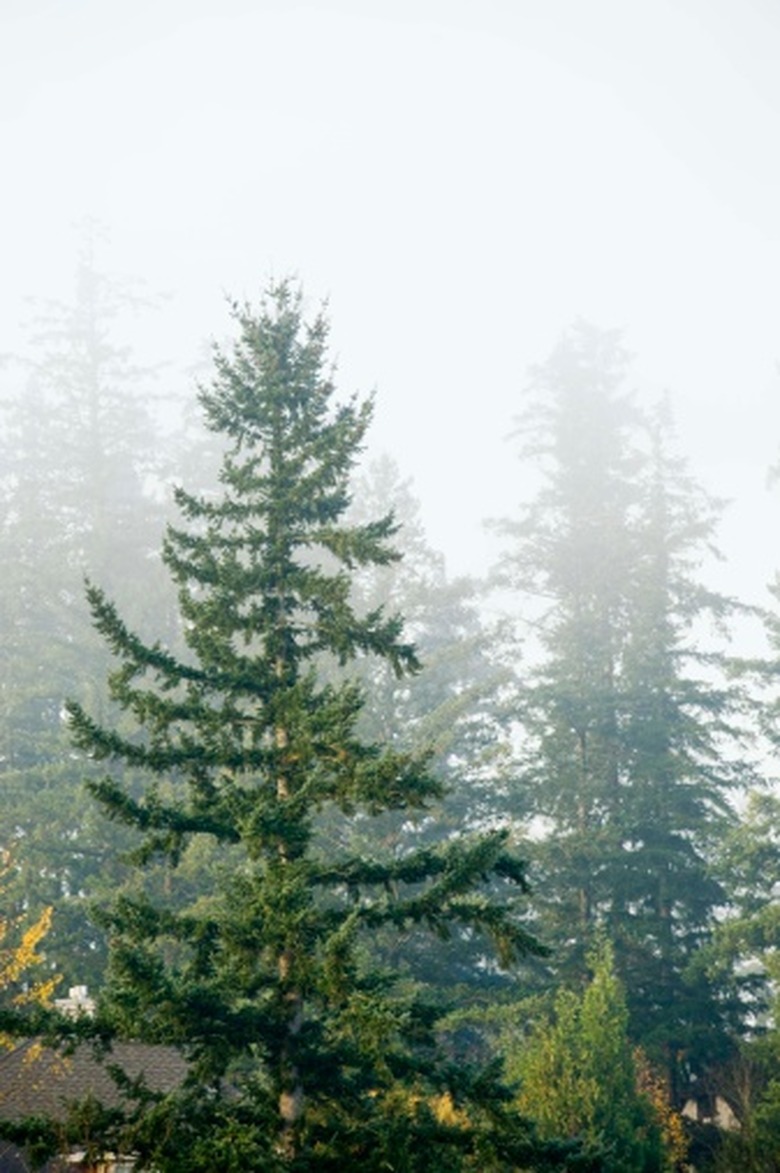Facts About Evergreen Trees
Evergreen trees can be found on every continent except Antarctica. Unlike deciduous trees that shed their foliage during winter, evergreen trees keep their leaves year-round. Thousands of species are considered evergreens, including conifers, palm trees and most trees found in the rainforest. Many evergreen tree species are considered valuable resources, providing humans with everything from lumber and firewood to medicinal ingredients and food.
Distribution
Evergreen trees are widely distributed around the world, particularly in colder regions of the Northern Hemisphere. Coniferous forests cover roughly 15 percent of the land on Earth and are comprised of mostly evergreen trees like cedars, junipers, pines, Douglas-firs and hemlocks. Tropical rainforests, the largest of which are found in South America, sub-Saharan Africa and East Asia, also are largely made up of evergreen trees due to consistently warm, humid climates that vary little from season to season.
Physical Characteristics
Though the common image of an evergreen may look something like a Christmas tree, evergreen trees actually vary greatly in their physical characteristics. Some, like the California redwood, can grow to be more than 350 feet tall, while others are just a few feet tall. Despite their name, not all evergreens are actually green and many have foliage that is red, brown, yellow or other colors. Many coniferous evergreens, like pines and larches, have needle-like foliage, while others have leaves, palms or other types of foliage.
Varieties
Evergreen trees are comprised of thousands of species. These include members of the following families: cypress, fir, spruce, holly, eucalyptus, rhododendron, palm, hemlock, juniper, laurel, pine, magnolia and redwood. Many species of oak tree are also evergreen.
Growing Conditions
In general evergreens require full sun to thrive, but many species are shade tolerant. Evergreens vary widely in their watering requirements, with some able to survive drought conditions and others needing daily rainfall, particularly those found in the rainforest. Coniferous evergreen trees generally like dry, well-drained soils while rainforest evergreens are better adapted to consistently moist, soggy soils. Coniferous evergreens can be extremely cold tolerant and able to inhabit some of the coldest habitable regions on earth. Rainforest evergreens, on the other hand, need consistent warm temperatures to survive.
